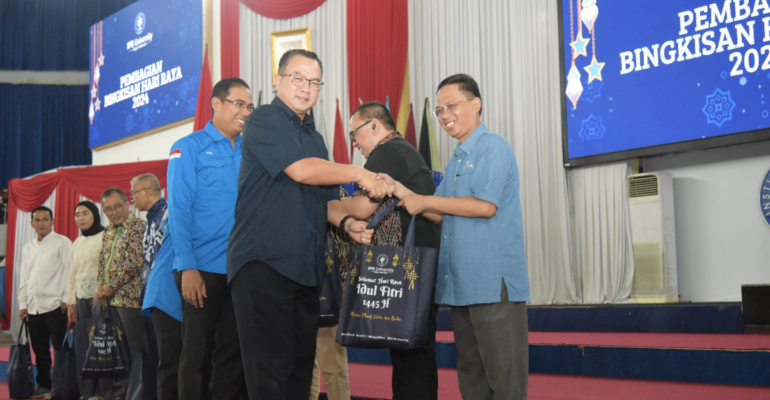IPB University Distributes 5,197 Hari Raya Gifts in 2024

IPB University distributed 5,197 Hari Raya Gifts (BHR) to employees, consisting of civil servants (PNS), permanent employees, contract employees, and casual daily workers (THL)/contract units. The distribution of BHR in 2024 took place at Graha Widya Wisuda, Campus of IPB Dramaga, Bogor (2/4).
This year, IPB University prepared a BHR package consisting of 10 products, namely beef (0.75 kg), beef liver (0.5kg), carcass chicken (2 heads), red tilapia (1kg), shrimp (0.5 kg), premium rice (2 kg), cooking oil (1 liter), sugar (1kg), syrup (1 bottle), and wheat flour (1 kg).
The Rector of IPB University, Prof Arif Satria, expressed his deepest gratitude to the committee team who had worked hard in the delivery of BHR. To all lecturers and staff of IPB University, he also expressed appreciation for the contribution made to the provision of BHR products this year.
“We continue to improve the quality of these products, and we believe the benefits will be even greater. Hopefully, this success will bring blessings and benefits to all parties involved,” he said.
Director of Human Resources (HR) of IPB University, Dr Heti Mulyati, said BHR is given by IPB University every year, especially in welcoming Eid al-Fitr 1445 H as an expression of gratitude and sharing happiness to all employees.
“In addition to employees, BHR is also given to the leadership/management of Agrianita, the Association of Retired IPB Employees, the Mosque Prosperity Council (DKM) Al Hurriyyah, and Koperasi Teko Sumodiwirjo,” she said.
Dr Heti added, the number of BHR recipients this year was 5,197 people, increasing by 1.13 percent compared to last year. In terms of budget, it also increased by about 4 percent.
In detail, the division based on work units consists of 3,031 Faculties/Schools (58%), 1,512 Rectorates (29%), 492 International Research Institutions (LRIs) that house study centers (9%), and other as many as 162 people (3%). (dr/Rz) (IAAS/FAE)


